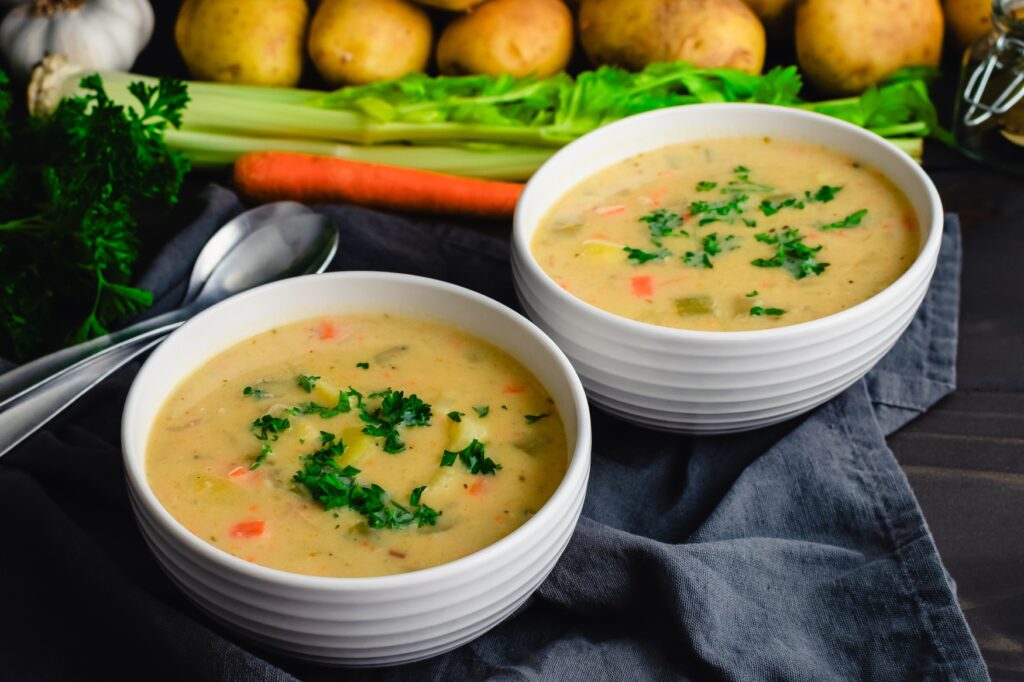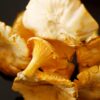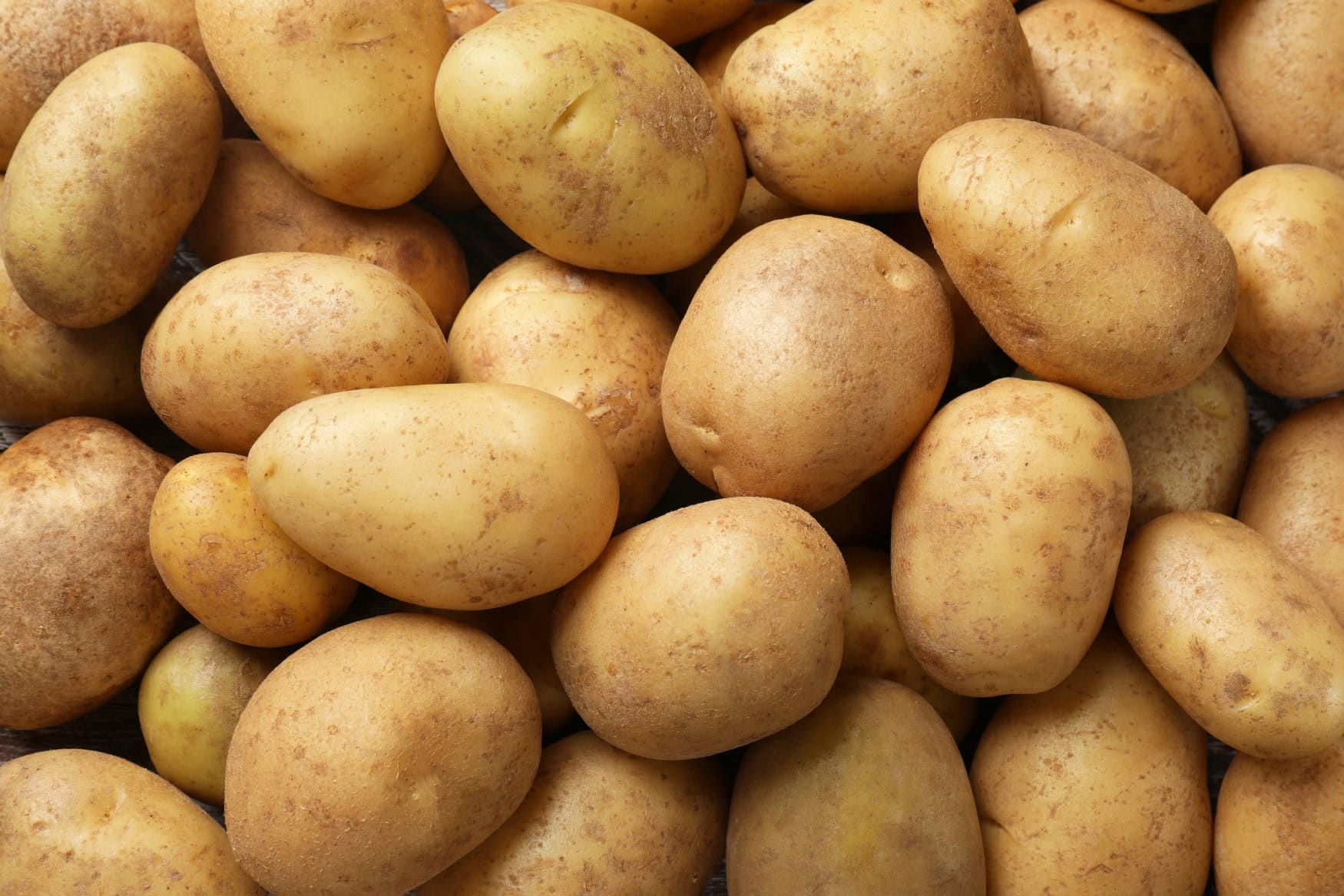The stable base of German cuisine is and remains the potato. As an inexpensive filling dish, it is an indispensable side dish, but when prepared correctly, it also shines as a standalone meal. We have put together our favorite German potato dishes for you.
Reibekuchen (hash browns)
Not only in the Rhineland, but especially popular here: “Reibekuchen”. They are also known elsewhere as “Kartoffelpuffer”, “Reibedatschi”, “Reibeplätzchen” oder “Backes”. Some of the names already reveal the manufacturing process, namely that the main ingredient of the circular treat is grated raw potatoes.
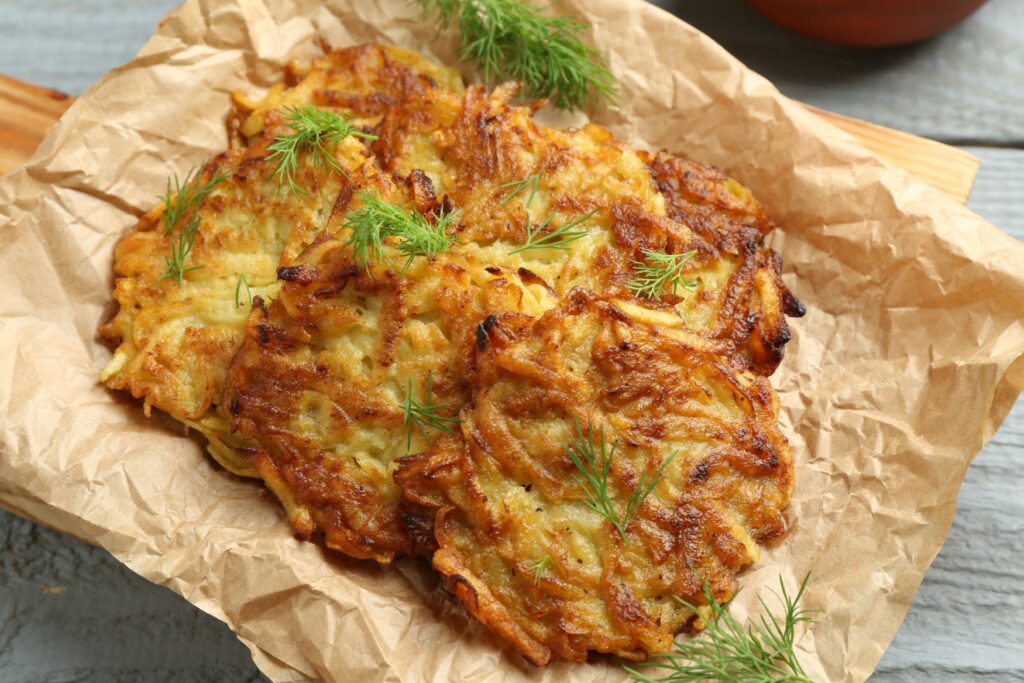
First, they are squeezed, then mixed with grated onions, salt, pepper and a thickening agent. Traditionally, egg is used, but it also works with a little more flour. This potato dough is then fried in plenty of hot fat or oil until it turns a golden yellow. It tastes best with apple compote, no discussion about that!
Kartoffelsalat (potato salad)
There are many German potato dishes but this one is cause for the most strife in Germany. The great dividing line runs between northern and southern Germany. While in the north, boiled, finely sliced potatoes (ideally jacket potatoes) are prepared with mayonnaise – sometimes refined with egg and gherkins – in the south, a vinegar and oil dressing with broth is used instead. The aim is to achieve a consistency that is as “schlotzig” as possible.
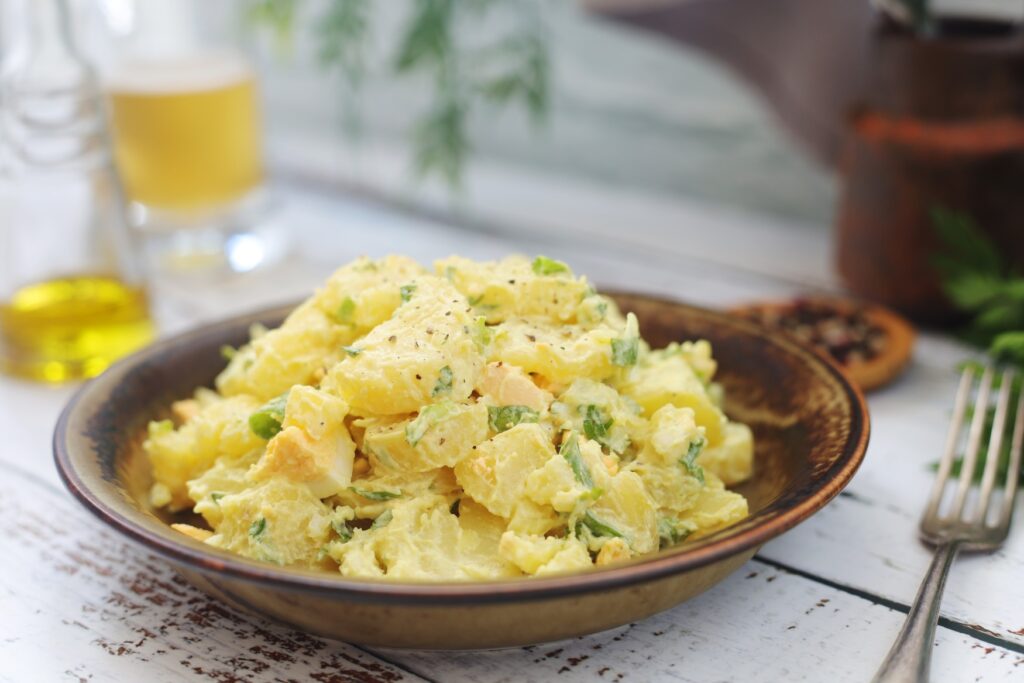
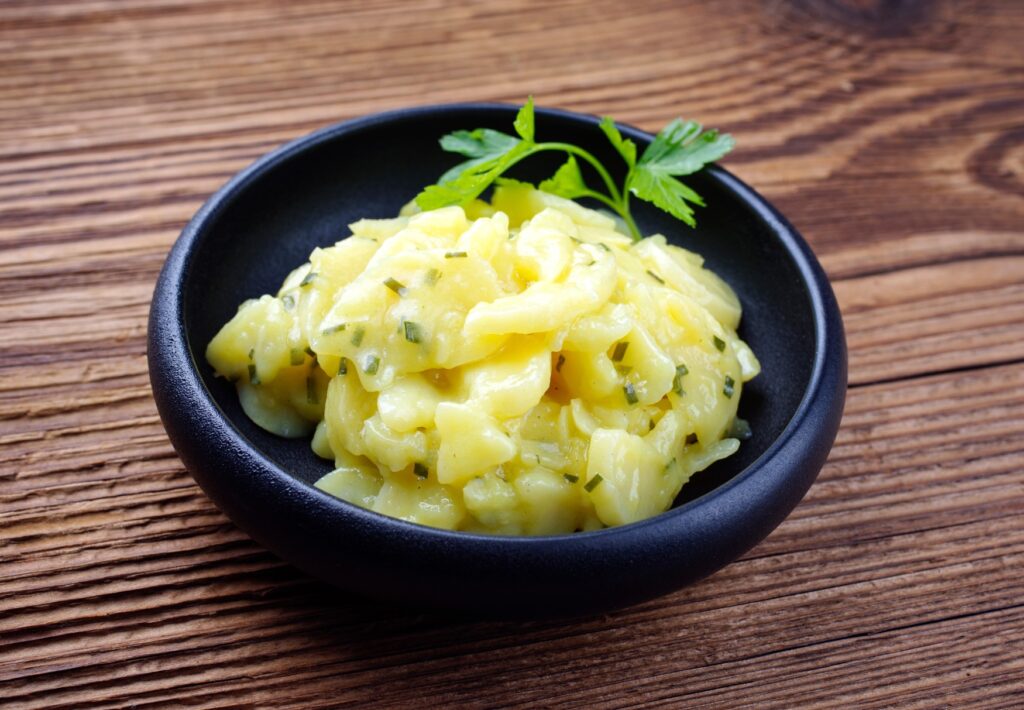
But the two main varieties and all their regional variants have one thing in common: they are the perfect side dish for any buffet. Potato salad is great to prepare in advance and comes into its own when it has had the necessary time to soak up flavours. What the true method of preparation is remains for smarter people than us to decide.
Potthucke/Dibbekuche (potato cake)
Not quite as well known, but no less delicious, is the “Potthucke” from the Westphalian Sauerland, also known in the Rhineland as “Dibbekuche”. A dough is mixed from a mixture of raw and cooked grated potatoes, together with eggs and cream. Half of it goes into an ovenproof, greased mold. Traditionally, a few pierced “Mettenden” (a type of pork sausage) are stuck into this potato layer (smoked tofu can be used instead of meat, but a little more fat or oil is needed then), then the remaining potato mixture is added on top.
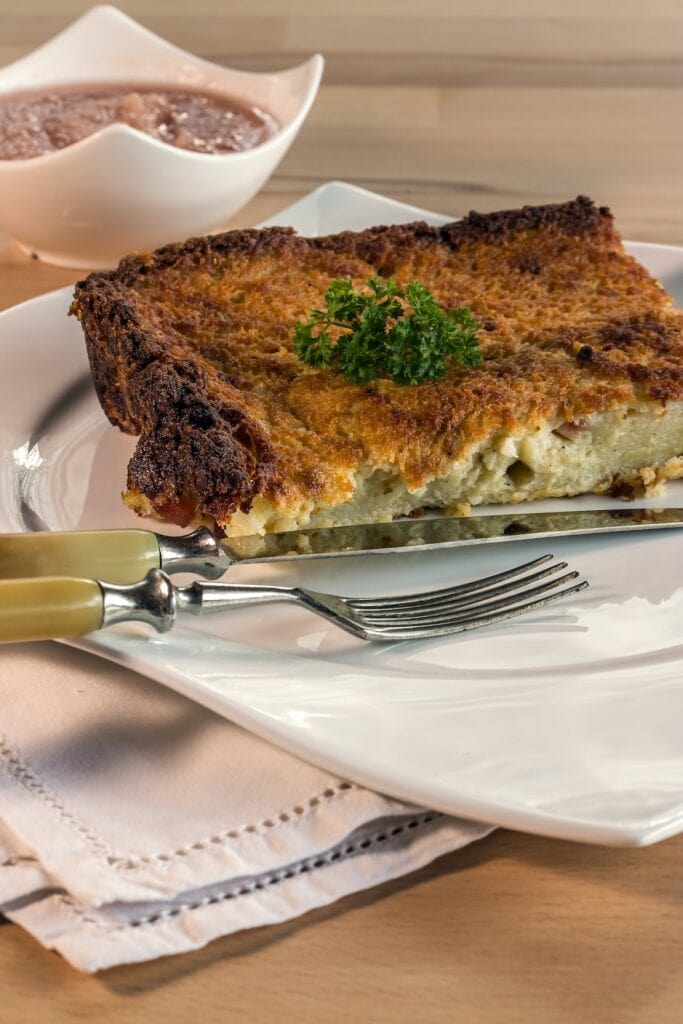
The whole thing is put in the oven and baked thoroughly. Then the mold is tilted and the exciting moment has arrived. If you haven’t added enough fat or turned up the oven too much, the potato mixture will stick to the mold. If the overturn works, however, you have a delicious-tasting, firm potato cake in front of you. The “Potthucke” is served sliced. The little extra effort: fry the cooled slices again until crispy and serve on a slice of pumpernickel with a gherkin garnish and a cold Pilsner.
Schupfnudeln (potato noodles)
The “Schupfnudel” has been around longer than potato farming in Europe. Originally, the small, finger-thick noodles were rolled entirely from wheat flour. But with the arrival of the potato in the old world, it quickly found its way into traditional recipes.
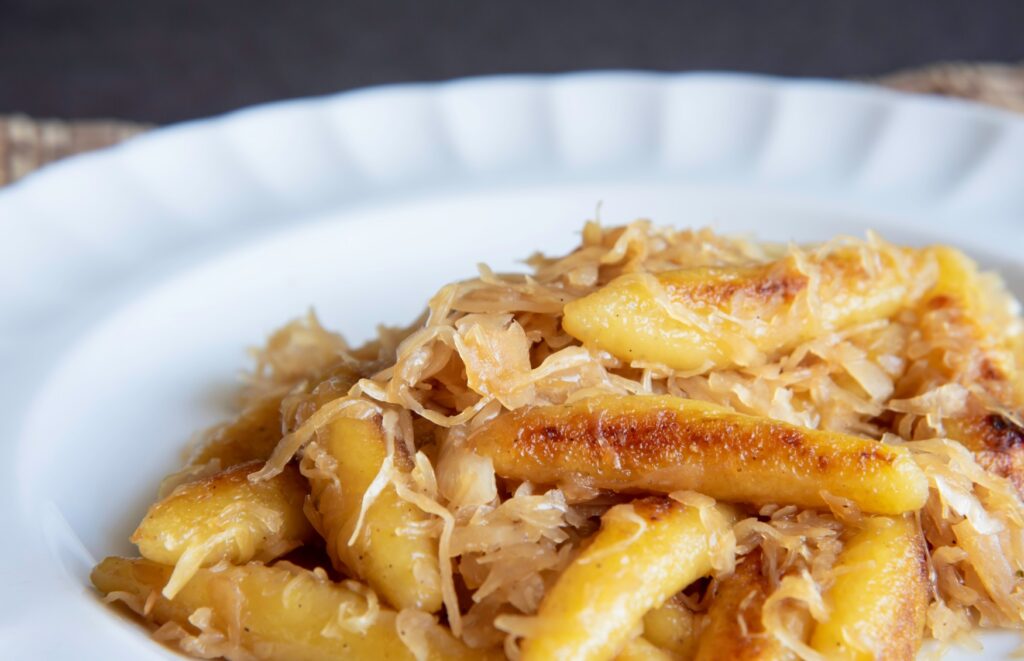
A mixture of wheat and potato flour, often with the addition of a chicken egg, is blended, rolled into a long strand of dough and then cut into individual noodles. Boil them in salted water and they’re ready! A classic (and delicious!) preparation is “Schupfnudeln” with bacon (or smoked tofu) and sauerkraut, all together in a pan. It’s guaranteed to fill you up!
Rösti
Who invented it? Admittedly, the rösti is basically a Swiss dish. But we won’t quibble about it here, especially since the potato pancakes are also very popular on this side of the border. Rösti is most comparable to “Reibekuchen”. However, a rösti is prepared without eggs, is much thicker and fills the entire pan.
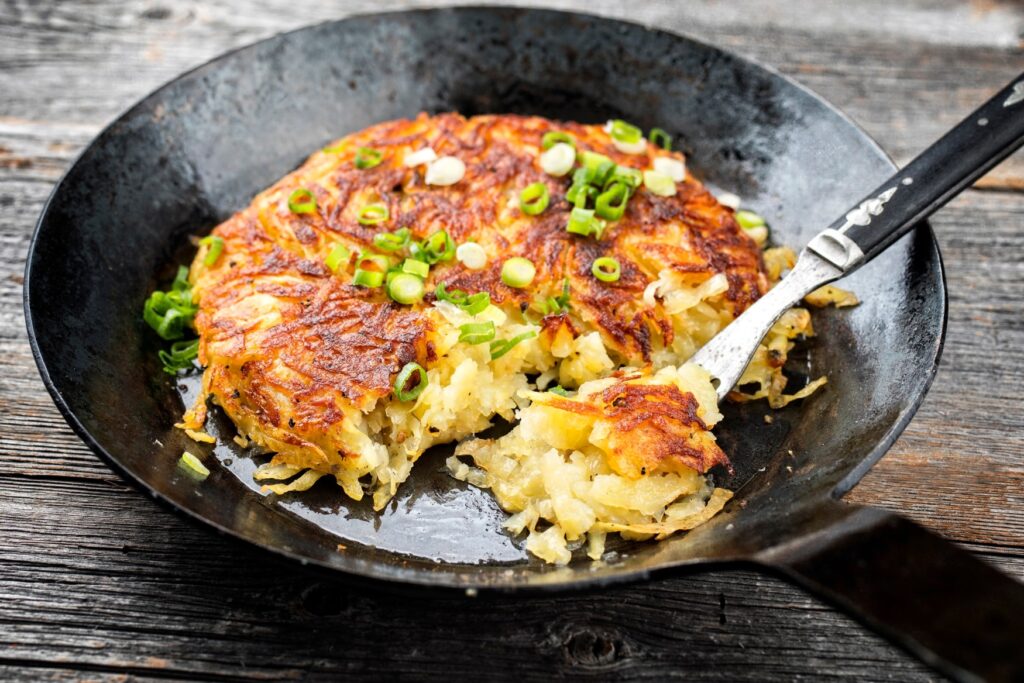
Depending on the regional method of preparation, the raw or cooked potato slices are placed in a pan with hot butter. First, one side is fried until golden brown, then the rösti is turned over with the help of a plate and fried on the other side. It’s best to use a medium heat to prevent it from sticking. Turning it over is the hardest part. As a rule, no egg is added to a rösti; instead, the potato’s own starch, combined with the heat, acts as a binding agent. The rösti will only hold its shape once it is cooked on both sides. Traditionally, it is served with sliced meat in a cream sauce.
Klöße/Knödel (potato dumplings)
This potato dish is a must on every festive table: the good old potato dumpling. A dough made from cooked, finely pressed potatoes is formed into round balls and then boiled again in simmering water. In Germany, umpteen different varieties have been developed, from bread dumplings with bread cubes to stuffed dumplings with a savory filling. Either way, the dumpling is the perfect companion for any sauce and happily absorbs it. But we still love to eat our dumplings at Christmas time with lots of red cabbage, as it is one of the most liked German potato dishes
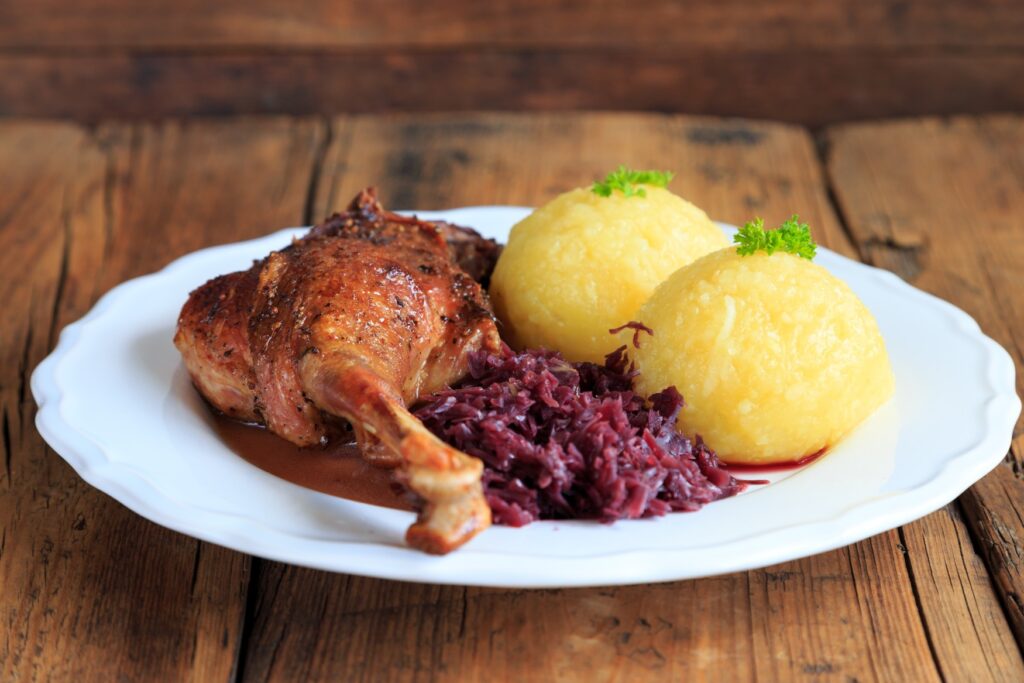
Kartoffelsuppe (potato soup)
It may not sound like a specialty to some, but it is: the humble potato soup. Not particularly spectacular, but simply reliable and incredibly easy to prepare. Just chop up a bunch of soup greens, sauté briefly and season, add diced potatoes, pour in broth or water and simmer for 20 minutes. The soup is ready. It also tastes good pureed, with or without sausage, and is a meal that warms the belly and heart alike, especially in fall and winter. Oh, and parsley is of course an essential addition – there’s no arguing about that!
